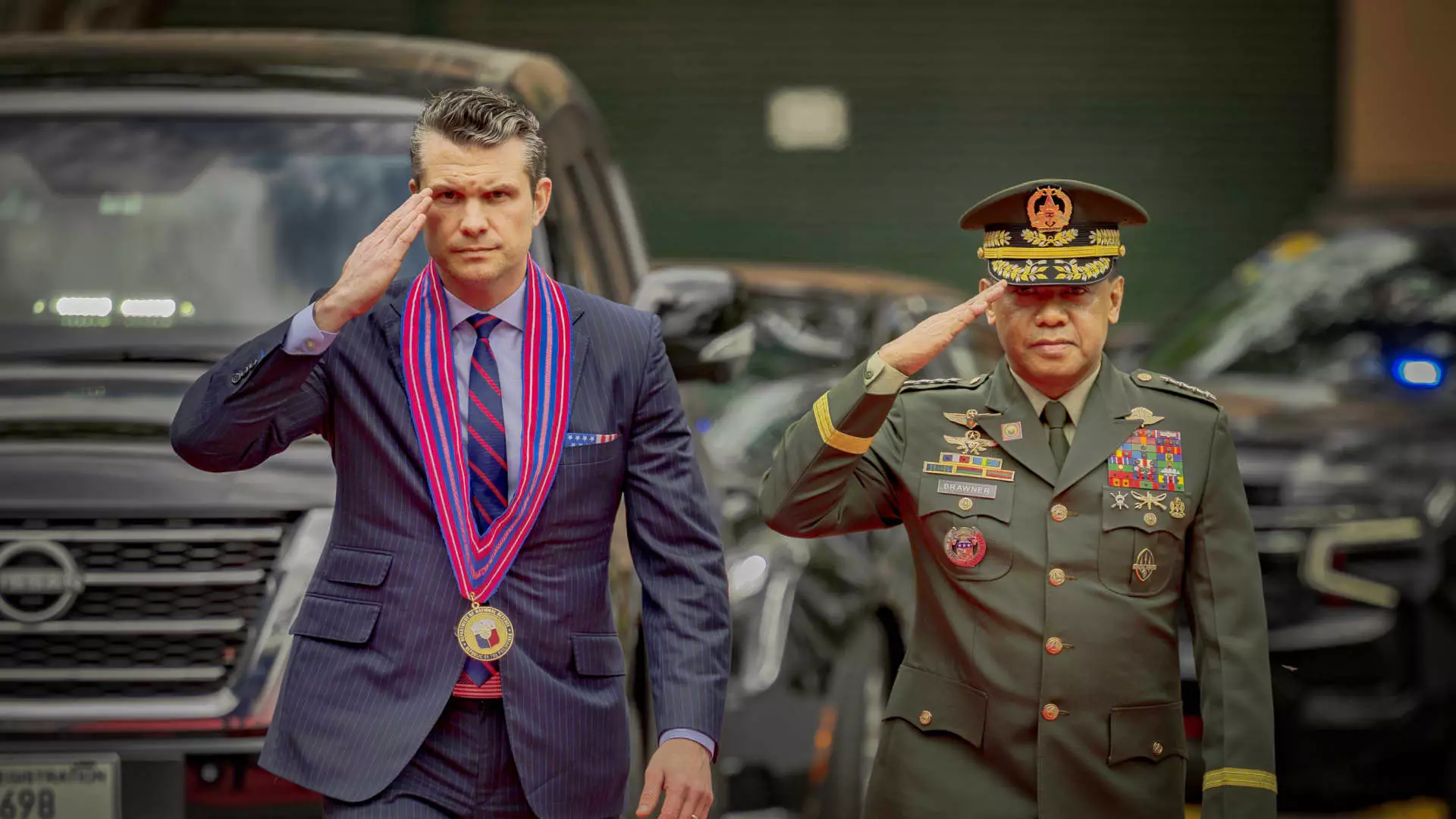As the world shifts into an era characterized by mounting tensions, particularly in the Indo-Pacific region, the United States and Japan find themselves entangled in a complex web of strategic alliances aimed at addressing China’s escalating aggression. Recently, U.S. Defense Secretary Pete Hegseth’s comments in Tokyo underscored the urgency and gravity of this situation. By dubbing Japan an “indispensable partner,” Hegseth not only underscored the strategic importance of this alliance but also highlighted the unique pressure cooker dynamic that defines U.S.-Japan military relations today.
The sentiment emanating from these discussions is multifaceted. While on the surface, words like “partnership” and “indispensable” reflect a shared commitment to peace, they mask the harsh realities of military commitments and the looming threat of conflict. Japan’s increased military spending and the commitment to develop advanced weaponry might signal a growing assertiveness that could further complicate regional stability. It’s critical to examine whether this militarization truly aims at deterrence or serves as a precursor to broader hostilities.
America’s Regional Strategy: The Dichotomy of Dependence and Command
In the U.S. military framework, Japan assumes a dual role: ally and site of American military infrastructure. Hosting 50,000 U.S. troops, fighter jet squadrons, and even a forward-deployed aircraft carrier strike group, Japan’s geographical positioning serves a pivotal role in U.S. strategy against China. However, the dynamics of this relationship beg the question: are we fostering genuine collaboration, or merely exploiting Japan’s location for our geostrategic ambitions?
The recent announcement of an upgraded U.S. military command in Japan raises eyebrows. While some might view this as a necessary evolution to counter China, it also hints at a troubling trend: a perpetuation of Japan’s reliance on U.S. military might. The underlying implications suggest a shifting power dynamic in which Japan is caught between becoming an active defender of its sovereignty and remaining a subordinate in the U.S. security architecture.
Historical Tensions: Shadows of the Past
The specter of history looms large over U.S.-Japan relations. Hegseth’s visit coincided with his attendance at a memorial service on Iwo Jima, a poignant reminder of the bloody legacy their countries share. While this acknowledgment may exhibit a form of respect, it also unearths uncomfortable truths about both nations’ militaristic pasts and how they shape present aspirations.
The paradox lies in Japan’s constitutional constraints. Despite the increasing thrust to enhance military capabilities, Japan remains shackled by a post-World War II constitution that fundamentally renounces the right to wage war. This constitutional dilemma complicates its military objectives, as strategic enhancements often clash with legal limitations. While Japan’s intention may be to bolster its defense against Chinese assertiveness, the underpinnings of this approach raise serious concerns about whether it is prepared for the reality of modern warfare.
Strategic Collaborations: The Future of Weaponry
The recent discussions about collaborating on missile development underscore a critical juncture in U.S.-Japan military engagement. Hegseth’s dialogue with Japanese Defense Minister Gen Nakatani about joint production of advanced munitions reflects a noteworthy pivot towards greater military integration. However, this quest for advanced weaponry must be scrutinized through a lens of accountability and the ethical implications of increased armament in a region already fraught with tensions.
While the urgency to address weapon shortages is palpable, the extensive military collaboration prompts a question of whether such endeavors genuinely fortify peace or merely tilt the balance towards a militarized stance. Emphasizing offensive capabilities, especially amid a backdrop of historical resentment, can easily spiral into an arms race rather than a deterrent strategy.
The Critique of Hawkish Politics
Further complicating the picture, Hegseth’s remarks reflect a broader trend within U.S. foreign policy that leans heavily towards militarization. The ongoing critique of European allies regarding their defense spending juxtaposes an implicit expectation for Japan to carry the burden of responsibility against a shared adversary. This hypocrisy surfaces when we consider that the U.S. oftentimes pursues its interests under the guise of altruism, prompting serious questions about the integrity of its partnerships.
In an era where political polarization runs rampant, an evaluation of America’s international commitments becomes crucial. The center-left perspective encourages a reevaluation of whether our allegiance to Japan serves both nations’ interests or merely perpetuates a cycle of militaristic dependency. For true stability in the Indo-Pacific, it’s vital for the U.S. to promote inclusive dialogue and peace, rather than merely relying on the muscular projections of military power.


Leave a Reply